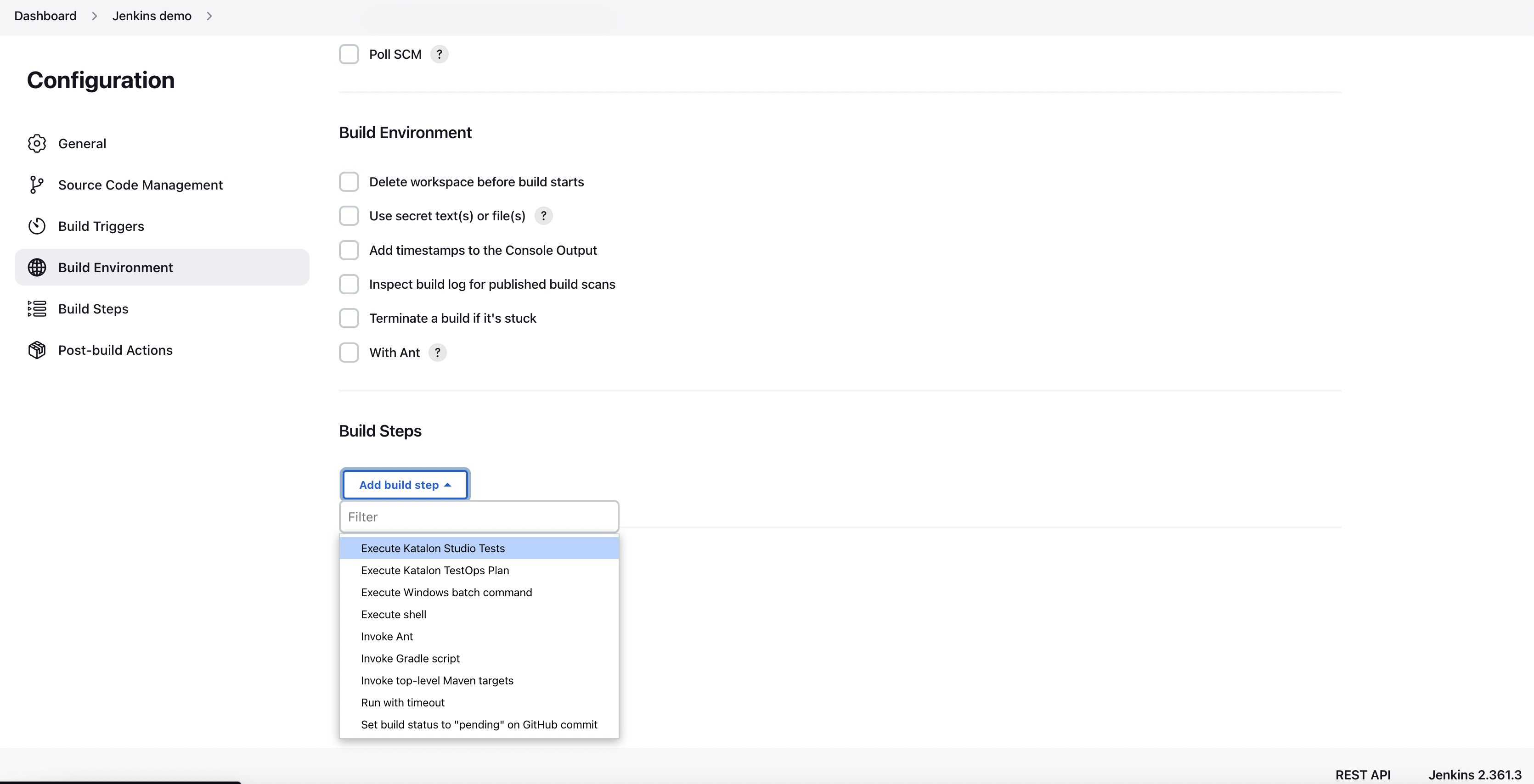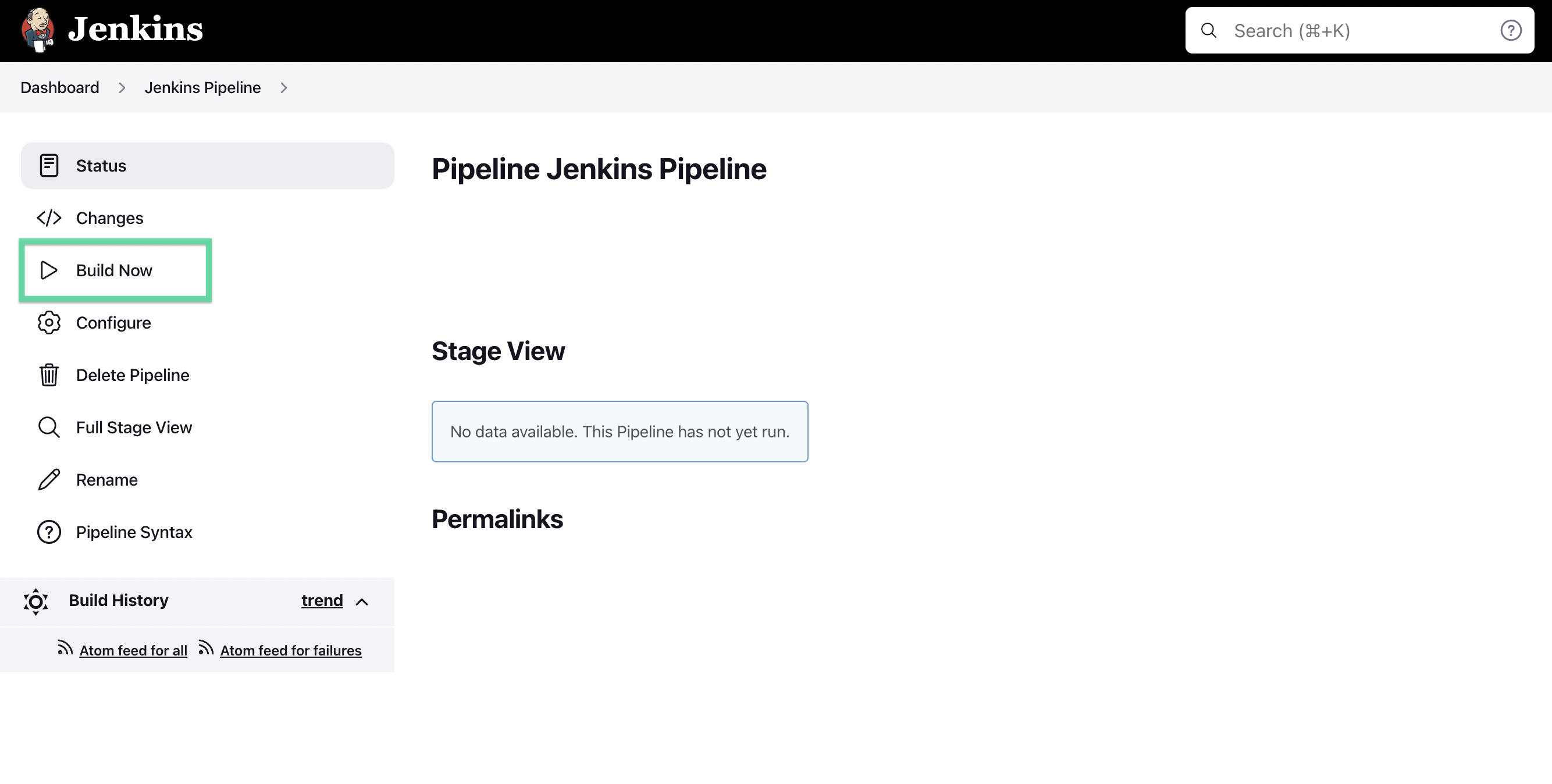Jenkins is an automation engine that supports a number of automation patterns. You can execute Katalon tests on Jenkins with the TestCloud environment using Katalon TestOps or Katalon Runtime Engine.
This document shows you how to:
- Install the Katalon plugin on Jenkins
- Schedule a Katalon execution from TestOps and execute it on Jenkins with the TestCloud environment
- Execute a Jenkins freestyle project with the TestCloud environment
- Execute a Jenkins pipeline project with the TestCloud environment
Requirements
Install the Katalon plugin on Jenkins
To run Katalon tests on Jenkins, you need to install the Katalon plugin on Jenkins. Do as follows:
- Sign in to Jenkins and go to Manage Jenkins > Manage Plugins.
The Plugin Manager page appears.
- Click on the Available tab and search for the Katalon plugin.
- Select the plugin and choose Install without restart.
Run tests on Jenkins with TestOps
To run tests on Jenkins with TestOps, you first need to schedule test executions on TestOps, select the TestCloud environment, and then link and execute them on Jenkins.
- Sign in to Katalon TestOps and go to your Project.
- Go to Test Execution and click Schedule Test Run. The Schedule Test Run dialog pops up:
- Give your test run a name, then select your script repository.
- Choose Test Suite or Test Suite Collection in the Type section, then select a test suite within Test Suite section, or Test Suite Collection according to your choice.
- In the Where to run section, choose TestCloud Test Environment from Test Environment Type dropdown list.
- Select the OS and browsers you want to test in the TestCloud dropdown list.
- Switch off the Repeat toggle, then select Save Configurations instead of Schedule Automated Test.
- Click Save.
Execute a Katalon TestOps plan on Jenkins
- Sign in to your Jenkins portal.
The Jenkins Dashboard page appears.
- Select New Item on the left side bar. Select Freestyle project, then enter a name for your project and click OK.
- You are navigated to your project page as below. Click on Build Steps.
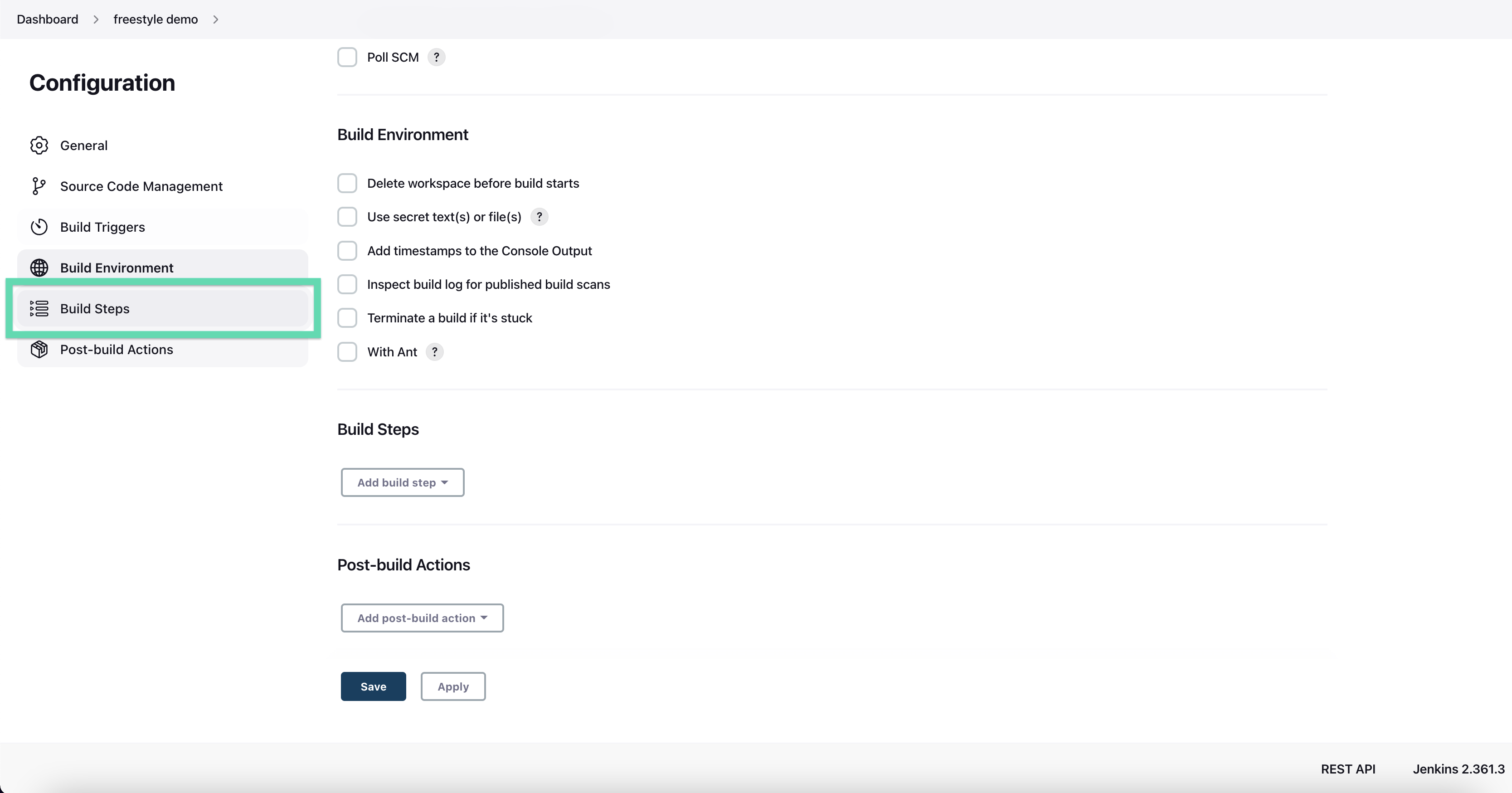
- Click Add Build Step, then select Execute Katalon TestOps Plan from the dropdown menu.
 The new Execute Katalon TestOps Plan dialog appears underneath Build Steps.
The new Execute Katalon TestOps Plan dialog appears underneath Build Steps. - Fill in the required information.
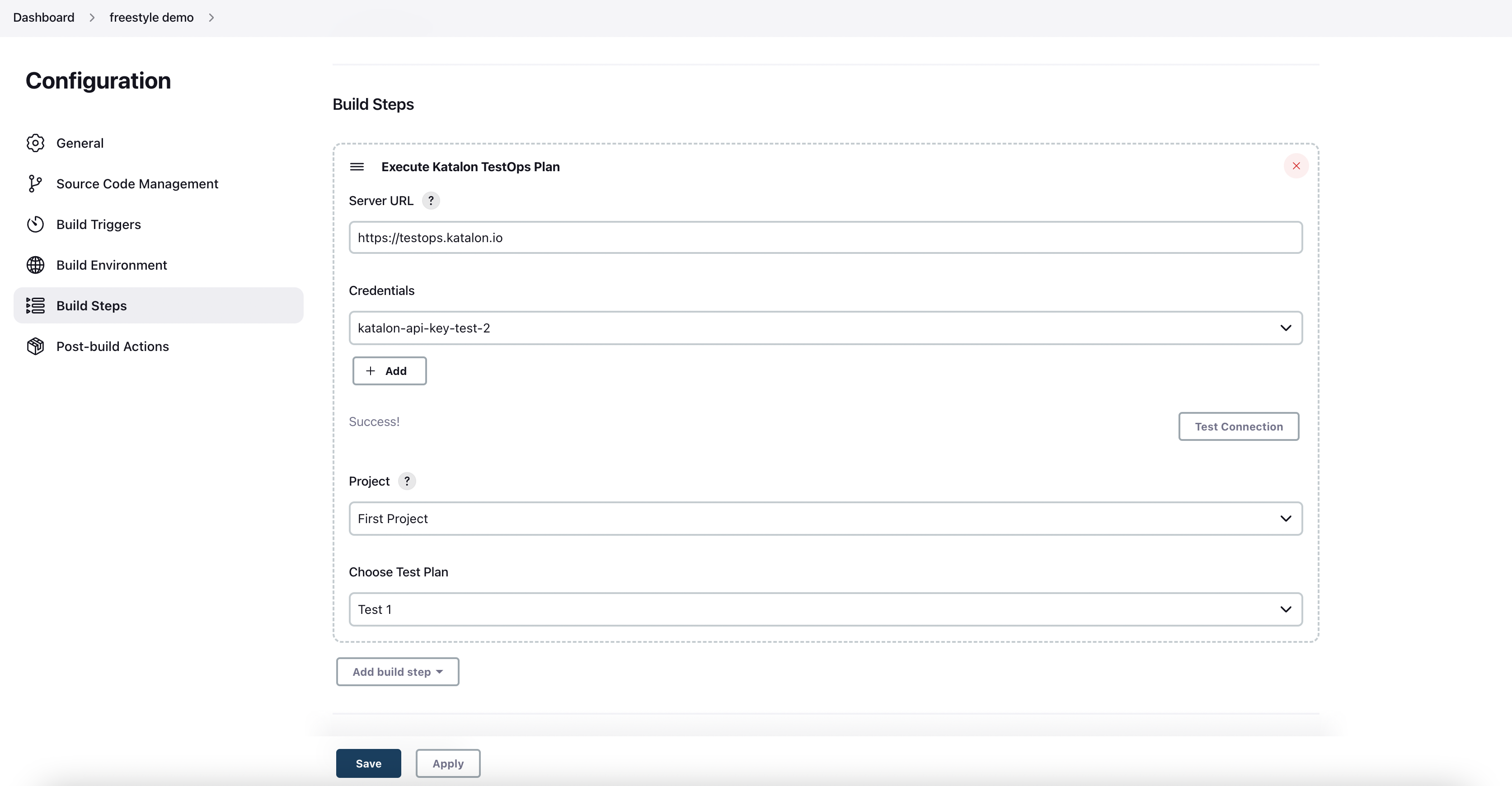
In the Server URL section, enter https://testops.katalon.io.
In the Credentials section, click Add > Jenkins to add a new credential. The Add Credentials dialog appears as below.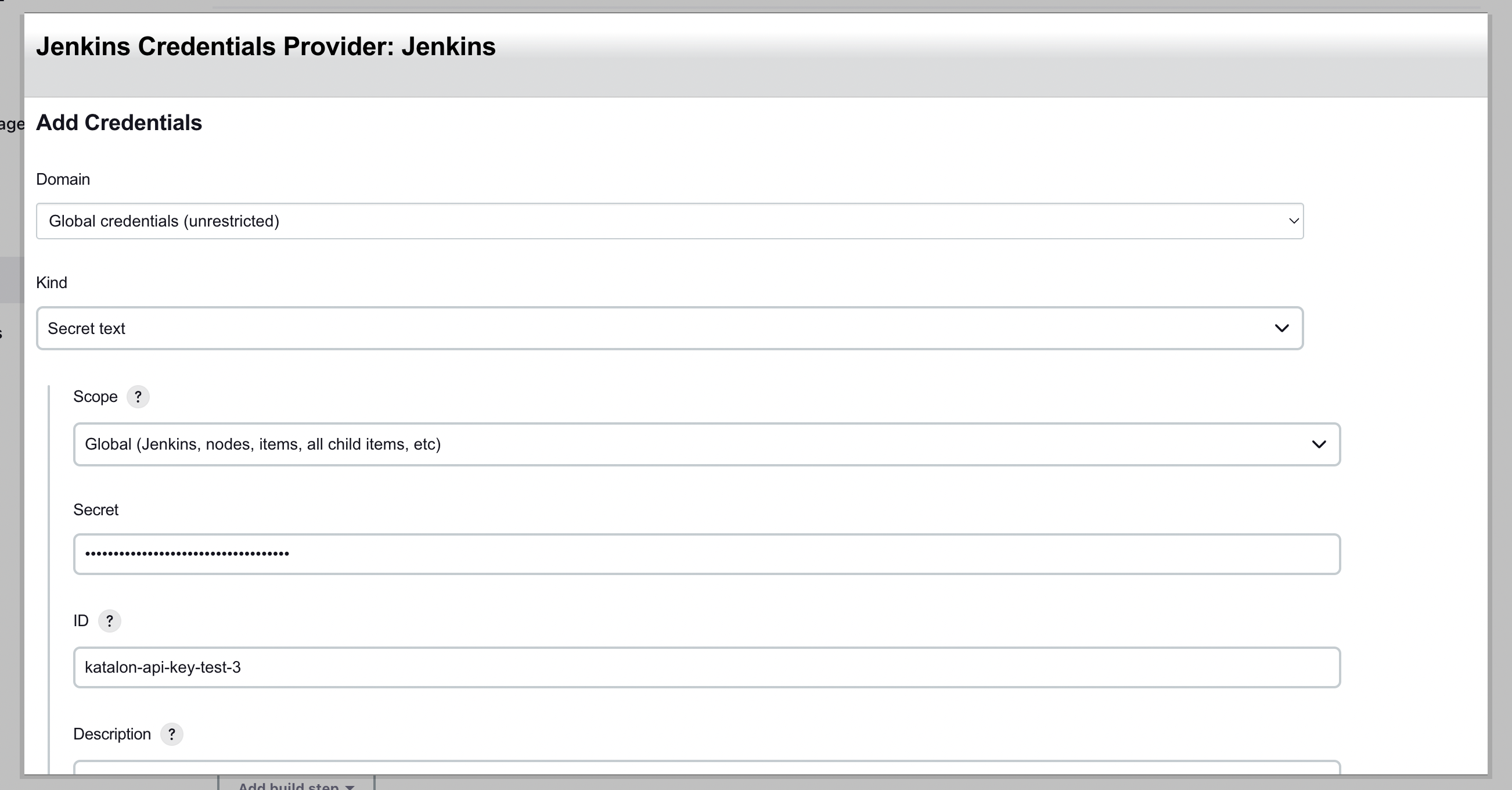
In the Kind section, select Secret text from the dropdown list.
In the Secret section, enter a Katalon TestOps API Key. See: API Keys.
In the ID section, give a name for the new credential (e.g., katalon-api-key-test).
Click Add to finish. You have added a new credential. You will be automatically navigated back to the Credentials section, where you can select the newly-added credential in the - none - box.
- Click Test Connection. Jenkins retrieves Projects and Test Runs from Katalon TestOps.
- Within the Project dropdown menu, select your TestOps project. After that, within the Choose Test Plan dropdown menu, select the test plan you have created on TestOps previously.
- Click Save. You will be navigated back to the Jenkins Dashboard page.
- Select Build Now on the left side bar to run the job.
Run tests in a Jenkins Freestyle project using KRE commands
Another way to execute Katalon tests on Jenkins is by running Katalon Runtime Engine (KRE) commands within the Jenkins interface. There are two approaches to do that: setting up a Jenkins Freestyle or Jenkins Pipeline project. This article describes the first approach.
- Sign in to Jenkins. The Jenkins's Dashboard page appears.
- Select New Item on the left side bar and select Freestyle project, then enter a name for your project, and select OK.
- In the Build section, click Add build step and choose Execute Katalon Studio Tests. The Execute Katalon Studio Tests box opens, asking you to input the Katalon Runtime Engine (KRE) version and command arguments. If you haven't downloaded KRE, you can input the KRE version you wish to execute within the Download Katalon Studio version box.
- Specify the Katalon Studio version you wish to execute with:
- If you haven't downloaded Katalon Runtime Engine (KRE), you can input the KRE version you wish to execute with in the Download Katalon Studio version box. KRE will be downloaded and deployed automatically. You can retrieve the list of all releases on our GitHub repository: Releases.
If you want to use a pre-installed version, manually input the KRE version you have installed in the
Use pre-installed Katalon Studio box with the following command line:
<KRE stored folder>-<KRE pre-installed-version>
For example:
/Users/USERNAME/Downloads/Katalon_Studio_Engine_MacOS-8.1.0.
- Input your command in the Command arguments box:
Here is a sample of command arguments to run test with TestCloud configurations:
-projectPath=/tmp/project -retry=0 -statusDelay=15 -testSuitePath="Test Suites/TS_RegressionTest" -browserType="TestCloud" -testcloudEnvironmentId="87" -testcloudTunnel="false" -apikey=<INPUT_YOUR_API_KEY_HERE>
You can generate the command arguments for tests with TestCloud configurations by using
the Katalon Studio command builder. To understand more about the command syntax, see
Katalon Runtime Engine command-line syntax.

Note: From version 7.7.0 onwards, if you belong to more than one Organization subscribing to Runtime Engine licenses, you can choose which Organization validates your license usage with the following command line: -orgID=<Katalon_OrgID>.
- After you are done with the configuration, click Save, then click Build Now to run the project.
Run tests in a Jenkins Pipeline project using KRE commands
This article describes how to set a Jenkins project as a Jenkins Pipeline project.
- Open Jenkins and create a new Pipeline project
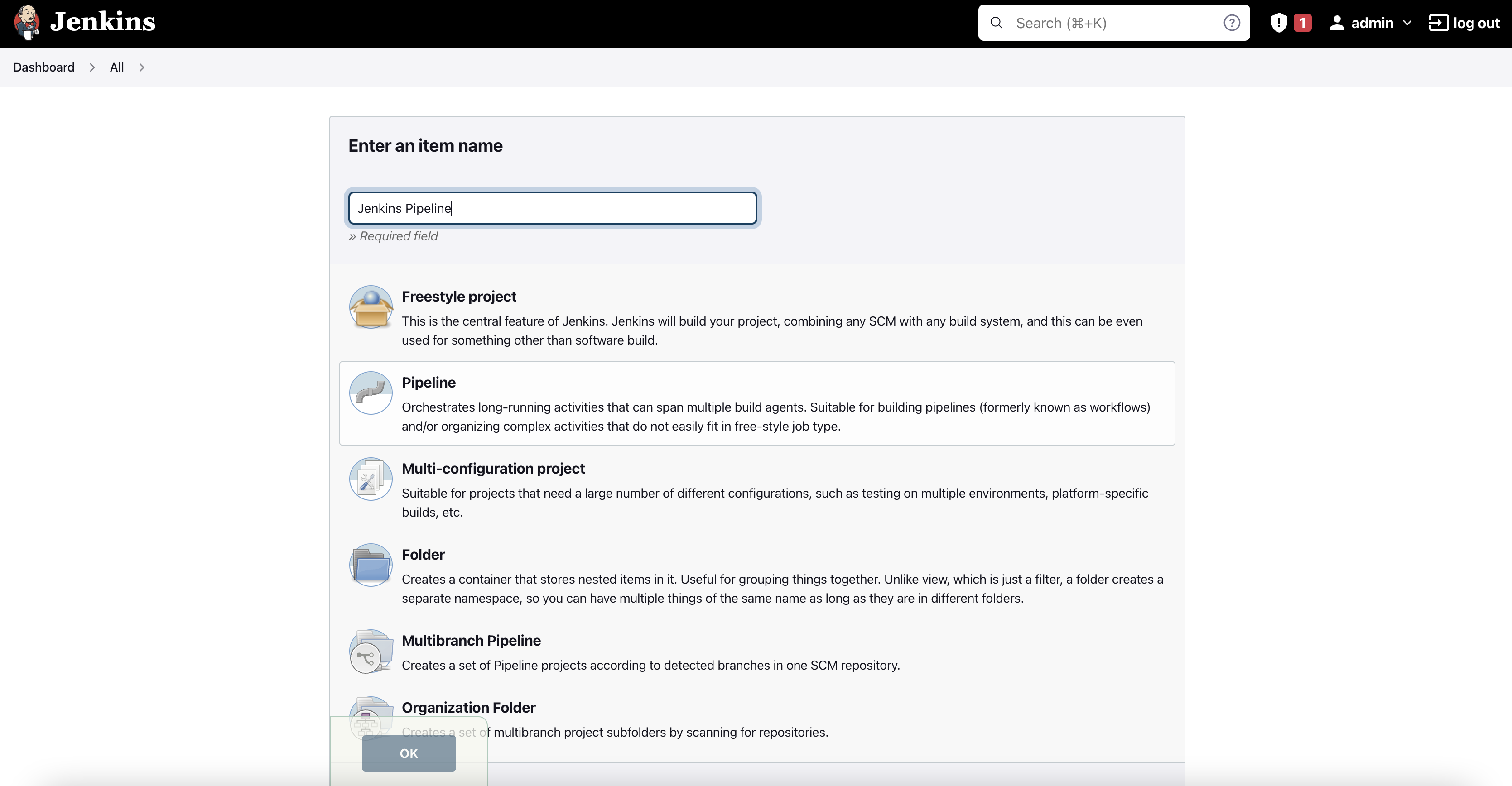
- Build the Jenkins Pipeline project
In the
Definition dropdown list, select
Pipeline Script.
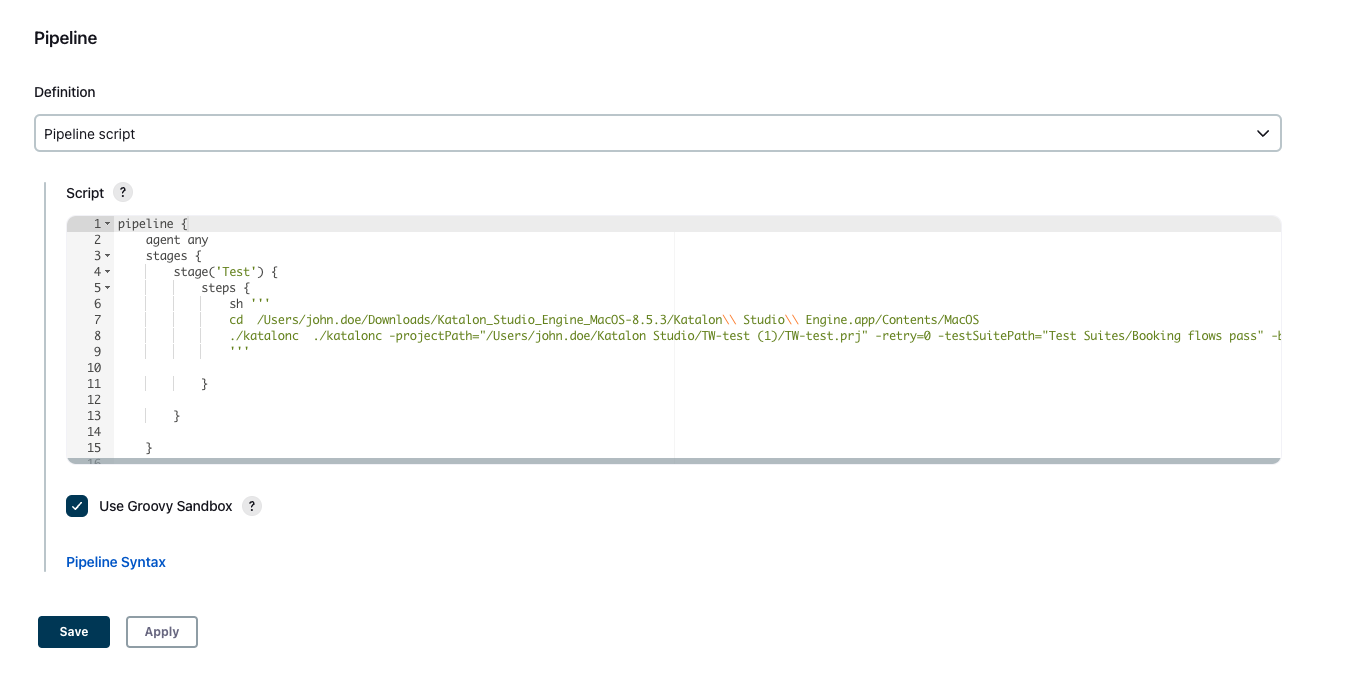
In Pipeline, copy and paste the following command-line arguments in the Script box, make adjustment in parameters such as your local path to Katalon Runtime Engine (KRE), projectPath, testSuitePath, testcloudEnvironmentId, and others as you need:
For Windows:
- Script template:
pipeline {
agent any
stages {
stage('Test') {
steps {
bat """
cd <KRE installed folder>
katalonc -projectPath="<projectpath>" -browserType="TestCloud" -testcloudEnvironmentId="<string value>" -testcloudTunnel="<true or false>" -retry=<number of retry times> -statusDelay=<seconds> -testSuitePath="<path>" -apiKey="<user API key>" -orgID=<Katalon_OrgID>
"""
}
}
}
}
- Script sample:
pipeline {
agent any
stages {
stage('Test') {
steps {
bat """
cd C:\Users\NAH\Desktop\Katalon_Studio_Engine_Windows_64-8.1.0
katalonc -projectPath="C:\Users\NAH\Desktop\ci-samples-master\test.prj" -browserType="TestCloud" -testcloudEnvironmentId="87" -testcloudTunnel="true" -retry=0 -statusDelay=15 -testSuitePath="Test Suites/TS_RegressionTest" -apiKey="<user API key>" -orgID=<Katalon_OrgID>
"""
}
}
}
}
For macOS/Linux:
- After you are done with the configuration, click Save, then click Build Now to run the project.
Review the test results on Jenkins and TestOps
To observe the test run results in the Jenkins portal, go to the Jenkins Build History, then select a build number.
Select Console Output on the left hand side menu to see the test run result within the console output.
If your project is integrated with Katalon TestOps, the test run results are automatically uploaded to Katalon TestOps. You can review the test run results in the TestOps portal. Go to Reports > Test Runs.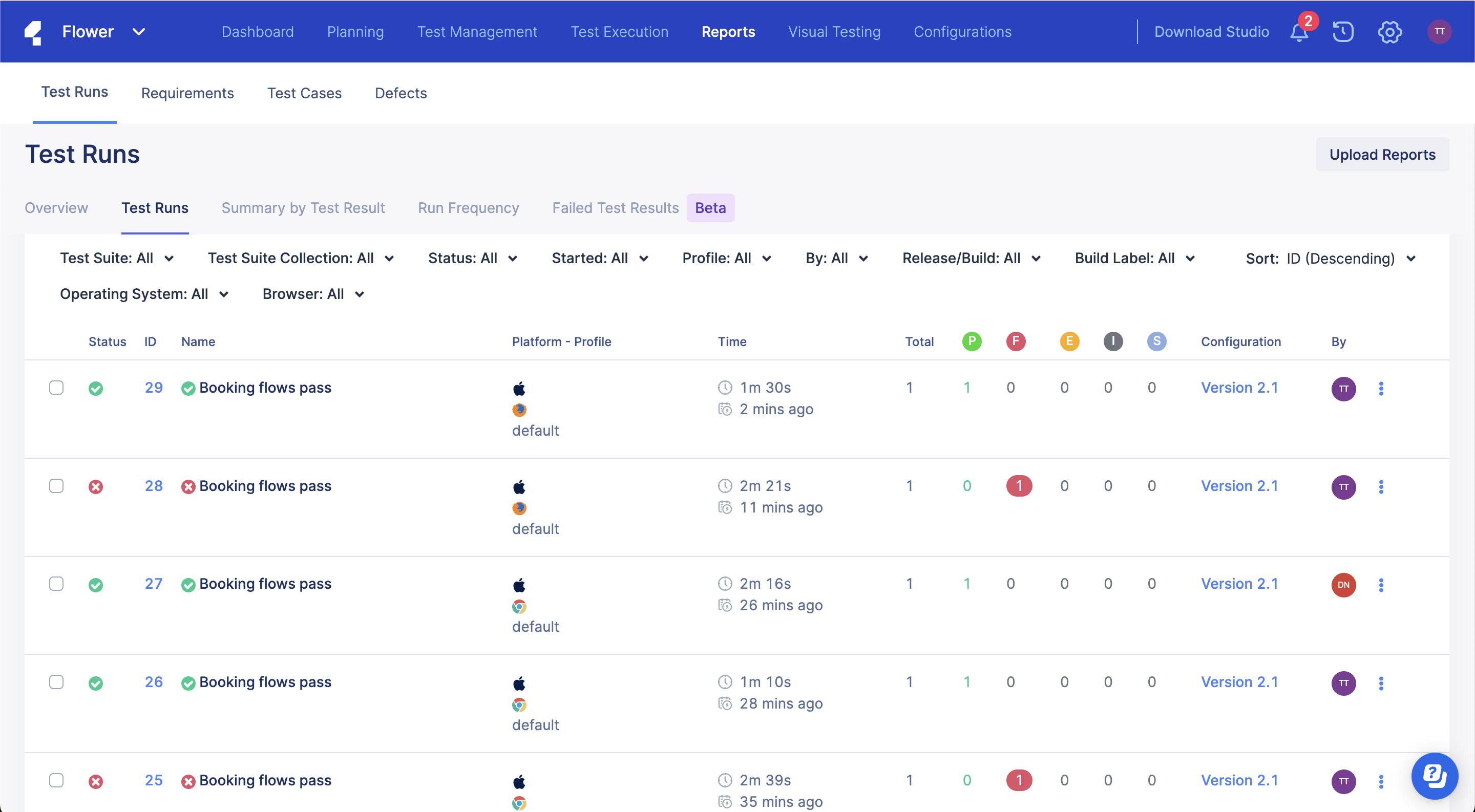


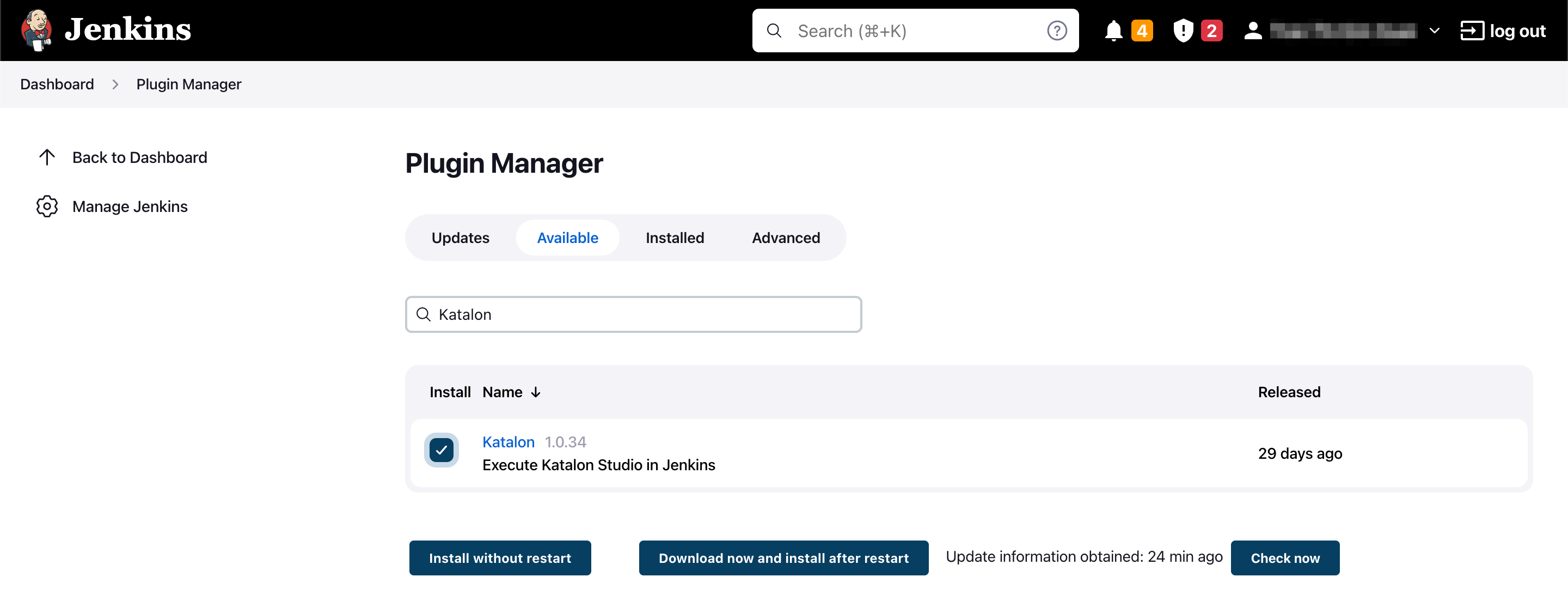
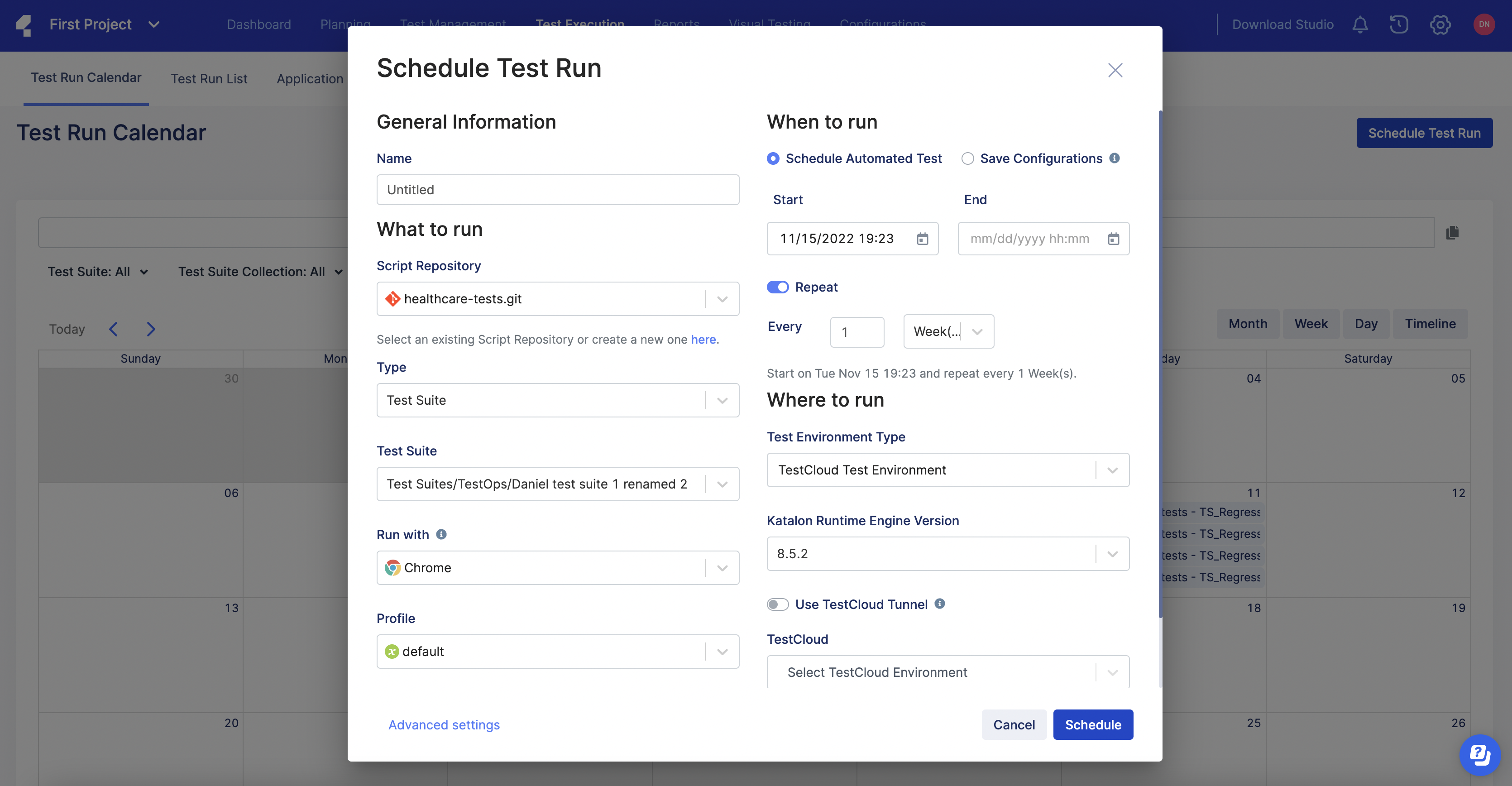
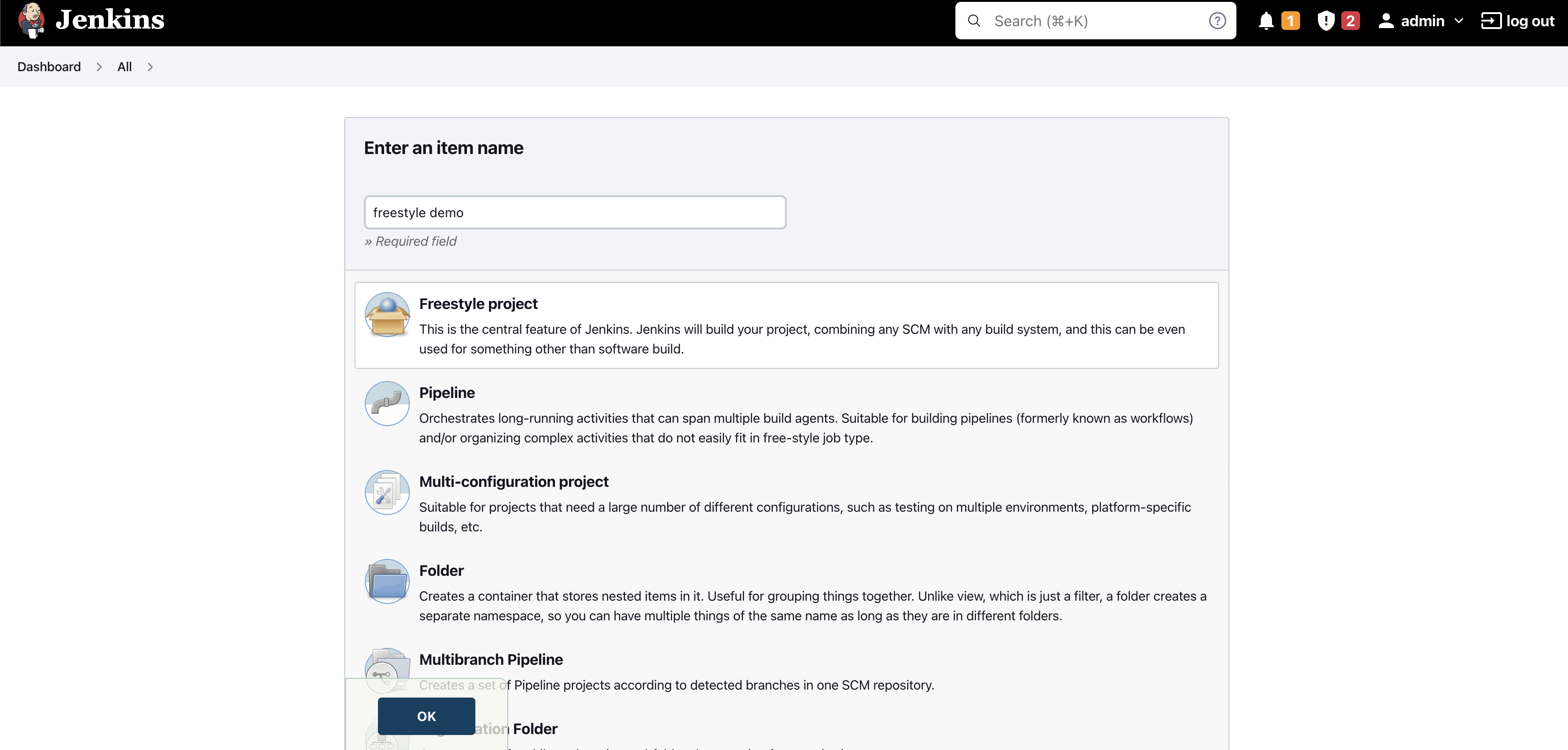

 The new
The new 



